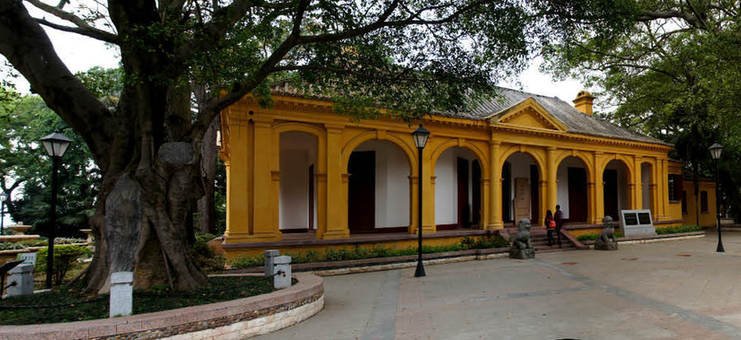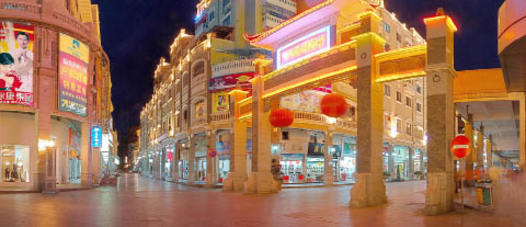Wuzhou: Lingnan’s Most Memorable City
 |
|
The former British Consulate. |
In 206 BC the Qin Dynasty collapsed and the country fell into anarchy. The area south of the Five Ridges came under the control of warlords. Zhao Tuo, a general of the former dynasty, established the Nanyue Kingdom in the south region and named his cousin Zhao Guang Prince of Cangwu. Then a castle was built to mark the b eginning of the city’s history. It is also the first town built in Guangxi with a historical record. Over 2,100 years ago, when the Lingqu Canal united the Yangtze River system with the Pearl River, the city became the most prosperous trading port in the area south of the Five Ridges. In 1897, during Qing Emperor Guangxu’s reign Wuzhou was designated a trading port. Thereafter, Wuzhou was the biggest inland trading and commercial port in Guangxi. Today you can still learn about the old city from the former British Consulate on Baihe Hill.
Religion in Wuzhou
Buddhism reached China from India along its ancient trading routes, the overland Silk Road and the Maritime Silk Road. Located at a crossroads of the Maritime Silk Road, Wuzhou was one of the first cities to fall under Buddhist influence. Mouzi of the Eastern Han Dynasty (AD 25-220), a native of Wuzhou, wrote China’s first Buddhist treatise combining elements of Confucianism and Taoism.
Although Buddhism reached Wuzhou at an early point, the local people still believed in the Dragon Mother religion. For the people of the Pearl River Basin, the Dragon Mother is a powerful local deity in Chinese Taoism. There is a temple to the Dragon Mother located on the bank of the Guijiang River. Built in the Northern Song Dynasty (960-1127) the temple occupies an area of 100,000 square meters, with a statue of the Dragon Mother standing at 38 meters. A statue of Fu Honglie, a well-respected figure from the Qing Dynasty, also stands in the temple. Fu was renowned for his sympathy for the common people and his generous works.
 |
|
The old city center abounds in time-honored arcade buildings. |
Old Architecture, Everlasting Glory
Because of the flood-prone subtropical climate, arcade houses have been popular in Wuzhou since ancient times. The first floor of an arcade house is typically used as a shop. Its occupants live on the second floor. During floods, resident shop owners could simply pile up bricks and continue business as before. Once water reached the second floor, they fastened boats to the outside walls and used the upstairs windows as doors. The city thus became another Venice. Iron hoops and movable plank doors have both come to symbolize Wuzhou.
Arcade townhouses are located in the old city center. Walking through the town is like stepping into history. Twenty-two streets, lined with 560 arcade houses in different styles, recall the city’s antique past. After hundreds of years, the arcade houses are still the city’s most charming features.
